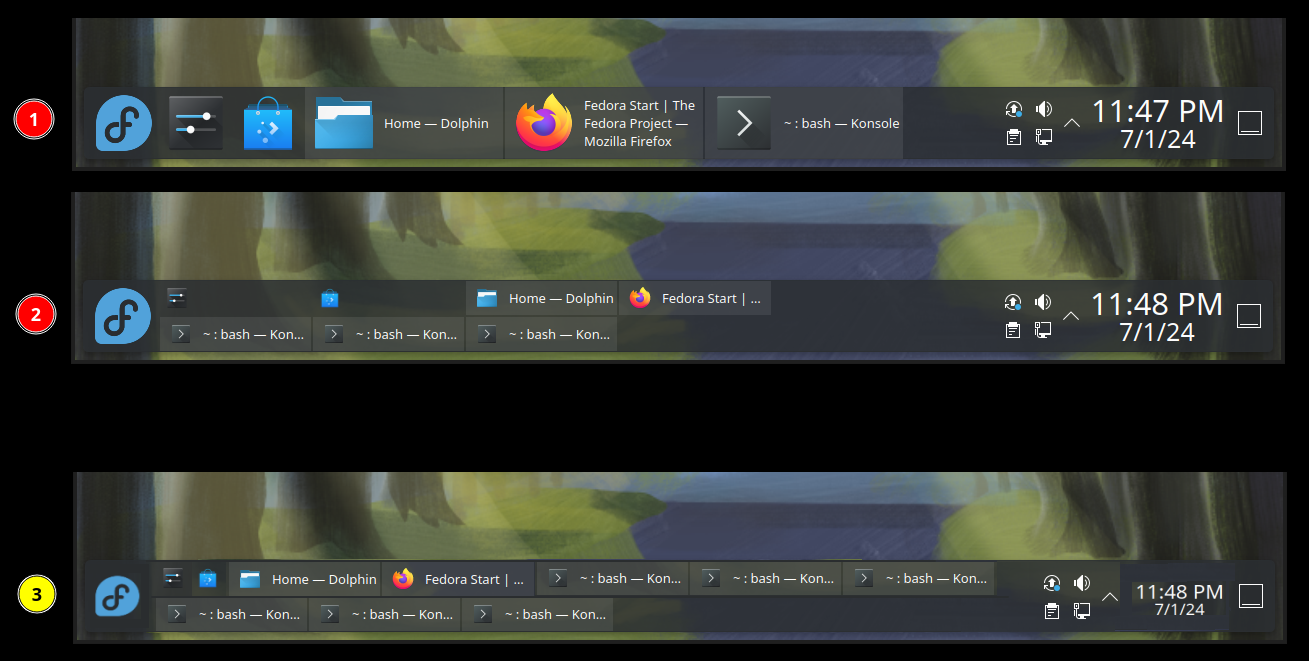this post was submitted on 01 Jul 2024
28 points (100.0% liked)
KDE
7234 readers
7 users here now
KDE is an international technology team creating user-friendly free and open source software for desktop and portable computing. KDE’s software runs on GNU/Linux, BSD and other operating systems, including Windows.
Plasma 6 Bugs
If you encounter a bug, proceed to https://bugs.kde.org/, check whether it has been reported.
If it hasn't, report it yourself.
PLEASE THINK CAREFULLY BEFORE POSTING HERE.
Developers do not look for reports on social media, so they will not see it and all it does is clutter up the feed.
founded 2 years ago
MODERATORS
you are viewing a single comment's thread
view the rest of the comments
view the rest of the comments

To further illustrate my point, here are some more screenshots of the current layout:
As well as what I think would look better:
This is a completely different perspective from the current "grid" layout. The idea here is:
N=1, let's say the available space is with widthWunits, there arePpinned icons and their width isKunits, then the available space for all "buttons" could be calculated with something likebuttons_total_space = (W - (P*K)). To get the target single button width, we could do something likebutton_width = min(300, buttons_total_space / buttons_count)(not sure if the case of "too smallbutton_width" should be handled in any special way - IMO probably not worth it).N>1case, the formula would become more complicated of course, as it would need to account for different available horizontal space in each row and figure out how many buttons to put in each row. For example, ifN=3and we have 8 pinned unopened icons, they will probably fit in the first row. Then we might end up with, say, 480px left in the first row and 800px in the other two, so if we need to distribute 10 buttons, we might decide to put 2 buttons (with width 240px) in the first row and 4 buttons (with width 200px) on each of the remaining 2 rows.